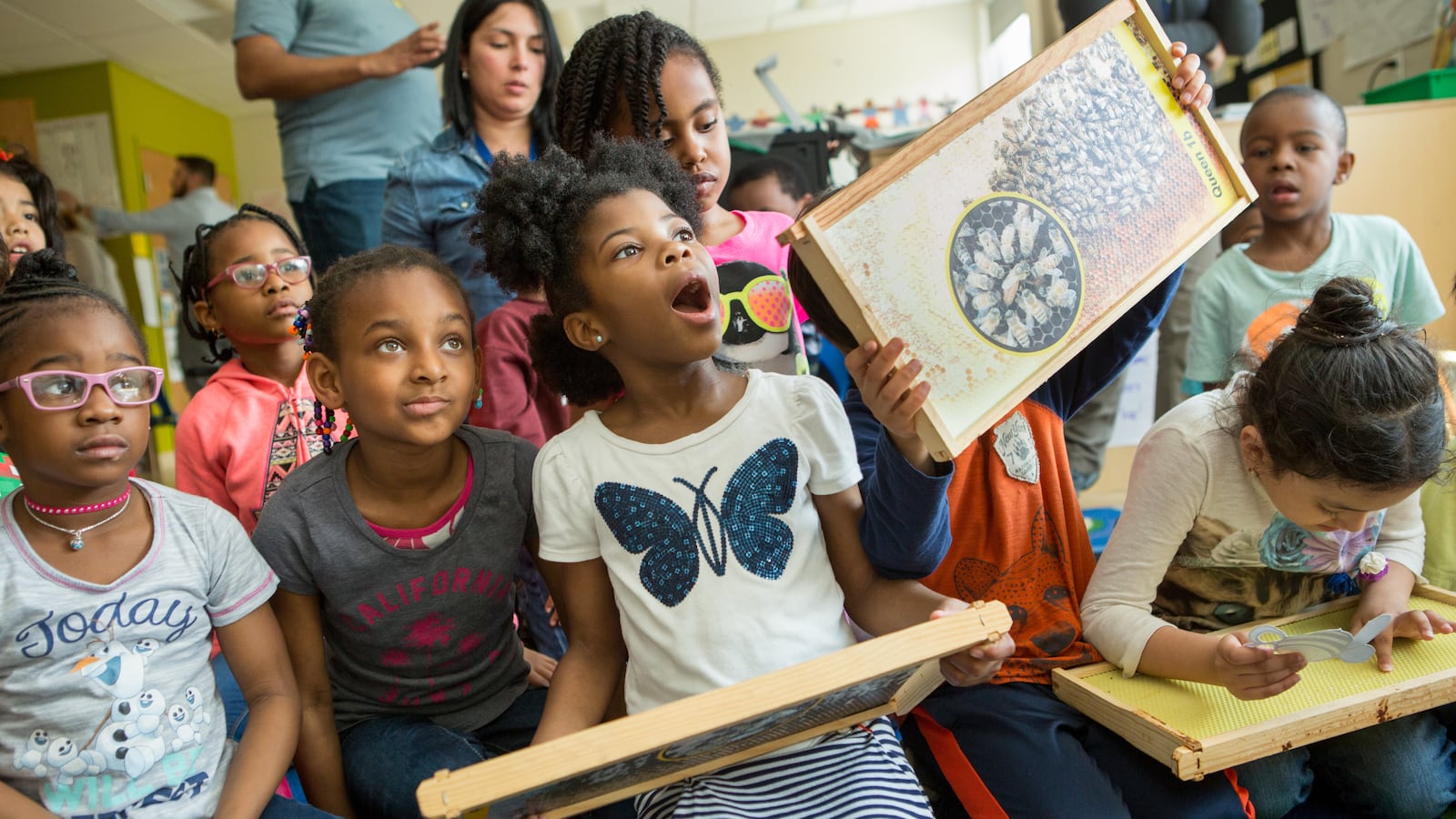When I taught fourth grade in New York City, I always assigned a classic Earth Day project, asking students to use recyclable items like empty toilet paper rolls and tin cans to create art. Children made bird feeders and wind chimes, and we planted seeds and took nature walks around our neighborhood. My goals were for students to learn about the importance of recycling and to develop an appreciation for nature. Now, as a parent of a kindergartener and second grader in Chicago Public Schools, I’ve worked on countless of these projects with my own children.
In recent years, due in large part to the local and global advocacy of young people, I’ve come to recognize the necessity of doing more to educate students about climate change, one of today’s most pressing issues. Earth Day is a great time to do it.
Earth is now about 1.2℃ warmer than it was in the 19th century, and it is projected to be about 2.4℃ warmer by the end of the century. However, if we want to avoid the worst consequences of climate change — including more frequent and intense extreme weather, damage and irreversible loss to ocean ecosystems, a reduction in people’s physical and mental health, economic loss, and disruption of key services and infrastructure — the increase in temperature must remain below 1.5℃. We are not on track.

Climate change demands the urgent efforts of everyone, including elementary teachers.
As a teacher educator and educational researcher, I have spent the past couple of years watching colleagues do this work in age-appropriate ways. I’ve seen sixth-graders write and perform plays about climate change; fifth-graders and pre-service teachers learn about water justice; and preschoolers learn about environmental stewardship, with an emphasis on principles from Indigenous cultures.
I’ve also participated in a study group with pre-K to college educators to read the anthology “All We Can Save: Truth, Courage, and Solutions for the Climate Crisis,” edited by Ayana Elizabeth Johnson and Katharine K. Wilkinson. This book helped my colleagues and I to consider our personal contributions to climate action by asking: “What are you good at? What is the work that needs doing? What brings you joy?” The discussions that followed left me inspired by the work of these Chicago-area teachers, in their classrooms and beyond.
One thing I’ve learned through this work is that many elementary teachers, like lots of people around the planet, get stuck in inaction. Some of us feel like we don’t know enough about climate change. Others of us know a bit, but feel overwhelmed by its complexity and the work that needs to be done. Others of us really want to address climate change in our teaching, but feel constrained by our curricula or great pressure to make up for lessons students might have missed because of the disruptions of the pandemic.
For some of the elementary teachers I have worked with, it has been helpful to think about climate change as not exclusively the domain of science teaching and learning. My colleague Kristine Schutz and I have suggested numerous ways to connect to the Illinois State Standards in social studies and science: through inquiry units in grades K-1 focused on loving the planet and one another, in grades 2-3 about living in an interconnected world, in grades 4-5 about renewable energy and sustainability, and in grades 6-8 about intersectional climate justice.
Or, we can teach about climate change through English Language Arts instruction that gives young people the tools to read and communicate about complex issues. For example, the CPS Skyline curriculum has a great sixth grade unit focused on reading non-fiction, inquiry/research, and argument writing that explores this essential question: How do we balance the needs of people and the condition of the natural world? Alternatively, children can read and write climate fiction as they imagine more just futures.
This Earth Day, I hope my fellow elementary educators will embrace the opportunity to do our part to contribute to climate action through our teaching. We can read aloud picture books about environmental stewardship (“We are Water Protectors” by Carole Lindstrom is one of my favorites); explore texts on topics like the fashion industry, clean energy, or agriculture (The Climascope Project is a great resource); or make art to inform others about climate change and to inspire climate action (Poets for the Planet has ideas for hosting a Poem-a-thon). It’s going to take all of us to move the needle on climate change.
Dr. Rebecca Woodard is an Associate Professor of Curriculum and Instruction at the University of Illinois at Chicago. She is a former New York City elementary and middle grades public school teacher who now researches writing and literacy instruction. Follow her on Twitter @beccawoodard.



